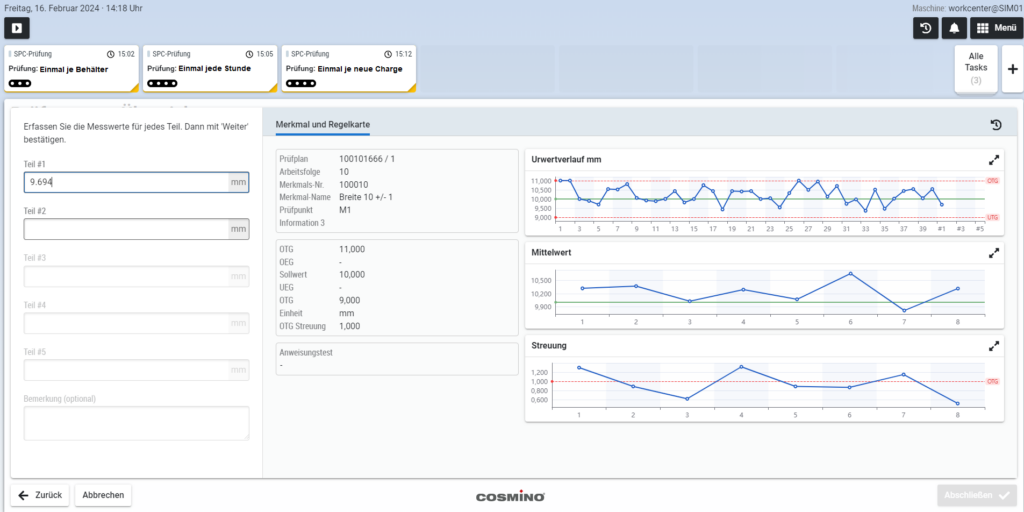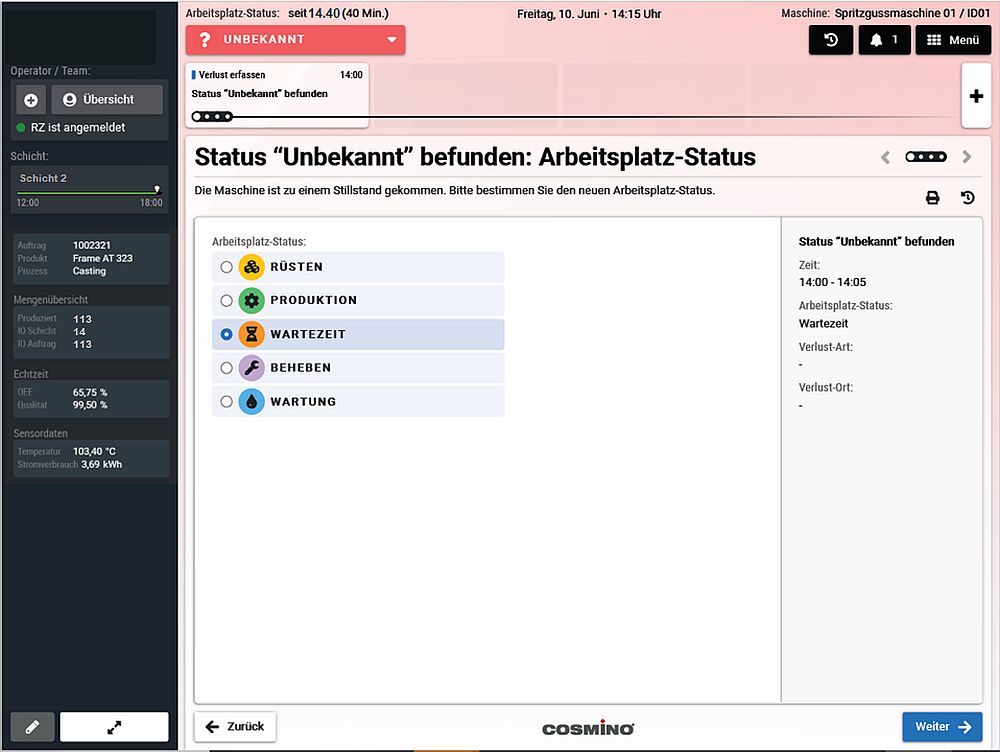That is why we have not only completely renewed the look of our Cosmino data entry dialogues. Instead of people only recognizing and manually calling up the required data capture tasks themselves, intelligent user guidance provides support and ensures timely and complete data capture in a priority-dependent sequence.
The heart is our Task Queue Manager, a background service that identifies all tasks that arise for the user and sets them in a sensible order.
An acquisition dialogue “thinks along” and guides through the data entry process
The Cosmino Task Queue Manager guides through the data entry process based on the customer-specific requirements for each activity. The task queue directly visible in the entry dialogue is a sequence of already prioritized entry tasks with an indication of when they are to be carried out.
The task starts automatically at the specified time and guides you step by step through the necessary entries. A task also displays all information required for this activity.
How does the task get into the task queue?
Many acquisition tasks can already be initiate by non-manual triggers today, e.g.:
- the diagnosis of a downtime when the machine is no longer producing,
- the entry or correction of NOK quantities at every order and shift change,
- SPC inspections using the inspection frequency specified in the inspection plan,
- maintenance activities based on the date in the maintenance calendar,
and many other tasks where the COSMINO task Queue Manager can determine the necessity and due date directly.
Other tasks are still triggered manually. But even then, the Task Queue Manager uses the customer specific setting to determine whether these tasks should be carried out immediately, whether a task that is already being carried out should be paused or whether other tasks should take priority.
For example, a manually triggered user login would take place immediately, as the person who has joined the system would otherwise be prevented from making entries.
A manually triggered job change is placed after the tasks still required for the old job. Inspections that are not yet due lose their necessity because of the task change and were deleted from the task queue. However, inspections that are already due remain in the queue before the task change.
At the same time, the order change can be a trigger for scheduling further activities that must always take place before or after an order change. This could be the recording of raw materials and additives at the end of the old order or the reading of product relevant documents at the start of the new order.





